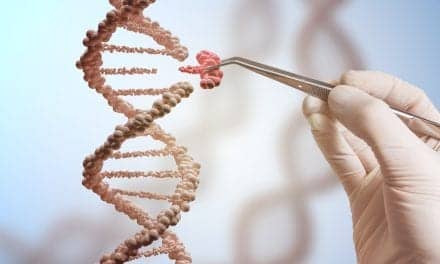Bethesda, Md – Researchers from the National Institute on Deafness and Other Communication Disorders (NIDCD) have identified a new protein that appears to work together with two already known proteins to regulate stereocilia length.
Scientists already know that stereocilium is composed of bundled filaments of a protein called actin and that stereocilia are linked by a system of horizontal filaments that connect the shorter ones to their taller neighbors. What isn’t known, however, is how stereocilia know when to stop growing. Because their precise height and staircase formation are essential to hearing, scientists have conjectured that there must be strong regulatory functions within the cell to police their length.
Now NIDCD scientist Bechara Kachar, MD and a team 
The scientists’ search for a mechanism that could make and maintain stereocilia at such an extraordinary level of precision was built on previous studies conducted in mice hair cells that have proteins that are unique to stereocilia, including the motor protein myosin XVa and another protein called whirlin. Gene mutations associated with the two proteins are known to cause several different forms of hearing loss and vestibular dysfunction.
Previous experiments have established that stereocilia lacking either myosin XVa or whirlin are abnormally short, indicating that the two proteins must be somehow involved in stereocilia growth. Also, researchers have shown that the two proteins cluster in abundant numbers at the tips of normal stereocilia. However, neither protein appears to have the ability to regulate actin bundle lengths, so they were unlikely candidates to be the ones responsible for determining stereocilia length.
Dr Kachar and his colleagues turned to another protein—Eps8—that was known from earlier studies to regulate actin bundle growth in other kinds of cells.
In collaboration with researchers at The FIRC Institute of Molecular Oncology Foundation and the Universita degli Studi di Milano in Milan, Italy, the researchers were able to show that Eps8 was localized at the tips of stereocilia. Even more interesting, Eps8 was present in amounts that were proportional to the length of each stereocilium. Thus, there was more Eps8 in long stereocilia and less of it in short ones.
Further experimentation established that hair cells from mice that lacked Eps8 have very short stereocilia. The researchers believe this was compelling evidence that Eps8 was regulating the lengths of stereocilia.
In addition, the researchers have already shown that mice without Eps8 are deaf. It is likely that the absence of Eps8 in humans could also cause loss of hearing.
Now that the researchers have identified Eps8 as a stereocilia length regulator, the team will next be looking at the molecular details involved in exactly how Eps8 regulates stereocilia length.
SOURCE: National Institute on Deafness and Other Communication Disorders




